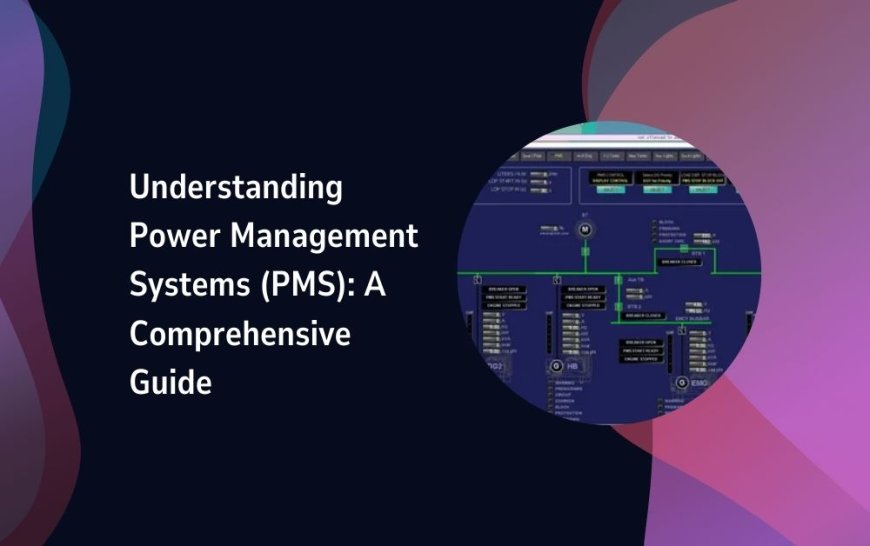Understanding Power Management Systems (PMS): A Comprehensive Guide

In today's fast-paced world, where energy efficiency and cost savings are at the forefront of business and environmental strategies, Power Management Systems (PMS) play a crucial role. This guide will walk you through what PMS is, why it's important, and how it's used across various industries.
What is a Power Management System (PMS)?
A Power Management System (PMS) is a sophisticated technology designed to monitor, control, and optimize the distribution and use of electrical power in facilities such as factories, hospitals, office buildings, and even large ships. At its core, a PMS helps ensure that the electrical systems operate smoothly, safely, and efficiently.
Key Functions of a Power Management System
- Monitoring: PMS systems continuously monitor the flow of electricity throughout a facility to ensure everything runs efficiently.
- Control: They provide the capability to manage the operation of electrical systems, including switching devices on or off as needed.
- Optimization: PMS systems help in reducing energy usage and costs by optimizing how energy is distributed and used within a facility.
Why is Power Management Important?
Enhancing Energy Efficiency
One of the primary benefits of using a PMS is its ability to enhance energy efficiency. By monitoring energy use and controlling the power distribution, these systems can reduce waste and improve the overall efficiency of a facility’s power use.
Ensuring Safety
Electrical systems can be hazardous. A PMS helps mitigate these risks by continuously monitoring the electrical network and responding quickly to any potentially dangerous situations, like power surges or failures.
Reducing Operational Costs
With energy costs consistently rising, businesses are always looking for ways to cut expenses. PMS can significantly reduce energy bills by optimizing the power usage, thus offering substantial cost savings over time.
How Does a Power Management System Work?
Components of a PMS
- Sensors: These are installed throughout the electrical system to collect data on power usage and system performance.
- Controllers: They interpret the data from sensors and make decisions about controlling power systems based on programmed settings.
- User Interface: This allows human operators to interact with the PMS, set preferences, and view data reports.
The Process of Power Management
The operation of a PMS can be broken down into a cycle of measurement, analysis, and response.
- Measurement: Sensors measure current power usage and system status.
- Analysis: The system analyzes this data to identify trends, inefficiencies, or problems.
- Response: Based on this analysis, the PMS adjusts the power settings automatically or suggests manual interventions.
Applications of Power Management Systems
In Industrial Settings
In industries, PMS helps to manage heavy machinery and production equipment, ensuring they operate at peak efficiency and reducing downtime due to electrical issues.
In Commercial Buildings
For commercial properties like shopping malls or office buildings, PMS can control lighting, heating, ventilation, and air conditioning systems to improve comfort while minimizing energy use.
In Residential Complexes
In residential settings, PMS can help in managing appliances and home systems to optimize power usage, which can be particularly helpful during times of high demand or fluctuating power prices.
Challenges in Implementing Power Management Systems
Technical Challenges
Implementing a PMS requires a detailed understanding of the existing electrical system and might involve complex installation processes.
Cost
The initial setup cost of a PMS can be high, although the long-term savings often justify the investment.
Integration
Integrating a new PMS with older systems can sometimes be challenging and may require significant modifications or upgrades.
The Future of Power Management Systems
With advancements in technology, the future of PMS looks promising. Innovations like artificial intelligence and machine learning are making these systems even more efficient and intuitive. As more organizations recognize the benefits of effective power management, the adoption of PMS is expected to grow, leading to smarter, more energy-efficient operations across all sectors.
Conclusion
Power Management Systems are vital for ensuring energy efficiency, safety, and cost-effectiveness in power usage across various industries. While there are challenges in implementing these systems, the benefits they offer make them an invaluable investment for the future. As we continue to strive towards more sustainable and efficient energy use, the role of PMS in our lives is only set to increase.
Understanding and implementing a Power Management System can be a game-changer for any organization looking to improve its energy management and reduce operational costs. It’s not just about saving money; it’s about taking proactive steps towards a more sustainable and efficient future.







